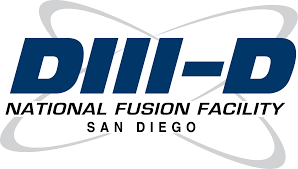Part 1 of 2 Parts
The physical conditions inside a nuclear fusion reactor are some of the harshest environments every produced on Earth. The materials that line a fusion reactor vessel have to cope with temperatures in the hundreds of millions of degrees at the very least. Zeke Unterberg is a senior research scientist in Department of Energy’s Oak Ridge National Laboratory’s Fusion Energy Division. He is the leader of team working with tungsten which is the leading candidate for nuclear fusion reactor construction. It has the highest melting point and the lowest vapor pressure of all the metals on the periodic table. It also has very high tensile strength. All of these properties make it a suitable material able to withstand extreme conditions for long periods of time.
Unterberg’s team is concentrating on understanding how tungsten survives inside a nuclear fusion reactor which heats light elements to temperatures hotter than the inside of the core of the sun so they fuse and release enormous energy. When hydrogen gas is injected into a fusion reactor, it becomes hydrogen plasma, a cloud of charged particles. The plasma is confined to a very small region by powerful magnetic fields or lasers.
Unterberg said, “You don’t want to put something in your reactor that only lasts a couple of days. You want to have sufficient lifetime. We put tungsten in areas where we anticipate there will be very high plasma bombardment.”
In 2016, Unterberg and his team began carrying out experiments in the tokamak at the DIII-D National Fusion Facility which is a DoE Office of Science user facility in San Diego, California. They were researching whether tungsten could be used as armor in the tokamak’s vacuum chamber in order to protect it from rapid destruction by the effects of plasma without causing heavy contamination of the plasma. If contamination did occur, it could ultimately extinguish the fusion reaction. Unterberg said, “We were trying to determine what areas in the chamber would be particularly bad: where the tungsten was most likely to generate impurities that can contaminate the plasma.”
Unterberg’s team used an enriched isotope of tungsten, W-182, along with the unmodified isotope in order to trace the erosion, transport and redeposition of tungsten from within the divertor. The divertor is an area inside the vacuum chamber designed to divert plasma and impurities. Observing the movement of tungsten inside the divertor gave them a deeper understanding of how tungsten erodes from surfaces inside a tokamak and interacts with the plasma. The W-182 isotope has exactly the same physical and chemical properties as regular tungsten.
The tungsten experiments at the DIII-D utilized small metal inserts coated with the enriched isotope which were placed closed to, but not at, the highest heat flux zone. The flux zone is an area of the reactor vessel which called the divertor far-target region. At the same time, researchers inserted inserts coated with the unmodified tungsten isotope at the strike-point in a divertor region with the highest fluxes. The remainder of the DIII-D chambers are armored with graphite.
The experimental setup with the tungsten inserts inside the fusion reactor permitted the researchers to collect samples on special probes temporarily inserted into the chamber for measuring impurity flow to and from the armor lining the vessel. This could give them a more precise concept of where the tungsten that had leaked away from the divertor into the chamber had originated. Unterberg said, “Using the enriched isotope gave us a unique fingerprint.”
These were the first such experiments conducted in a tokamak fusion reactor. One of the goals of the research was to help decide the best materials and locations for these materials in order to armor the fusion chamber while keeping impurities caused by the plasma-material interactions largely contained to the divertor and not contaminating the magnet-confined core plasma used to produce the fusion reaction.
Please read Part 2 next
Nuclear Fusion 109 – Researchers Explore Behavior Of Tungsten Inside A Fusion Reactor – Part 1 of 2 Parts

Written by
in
